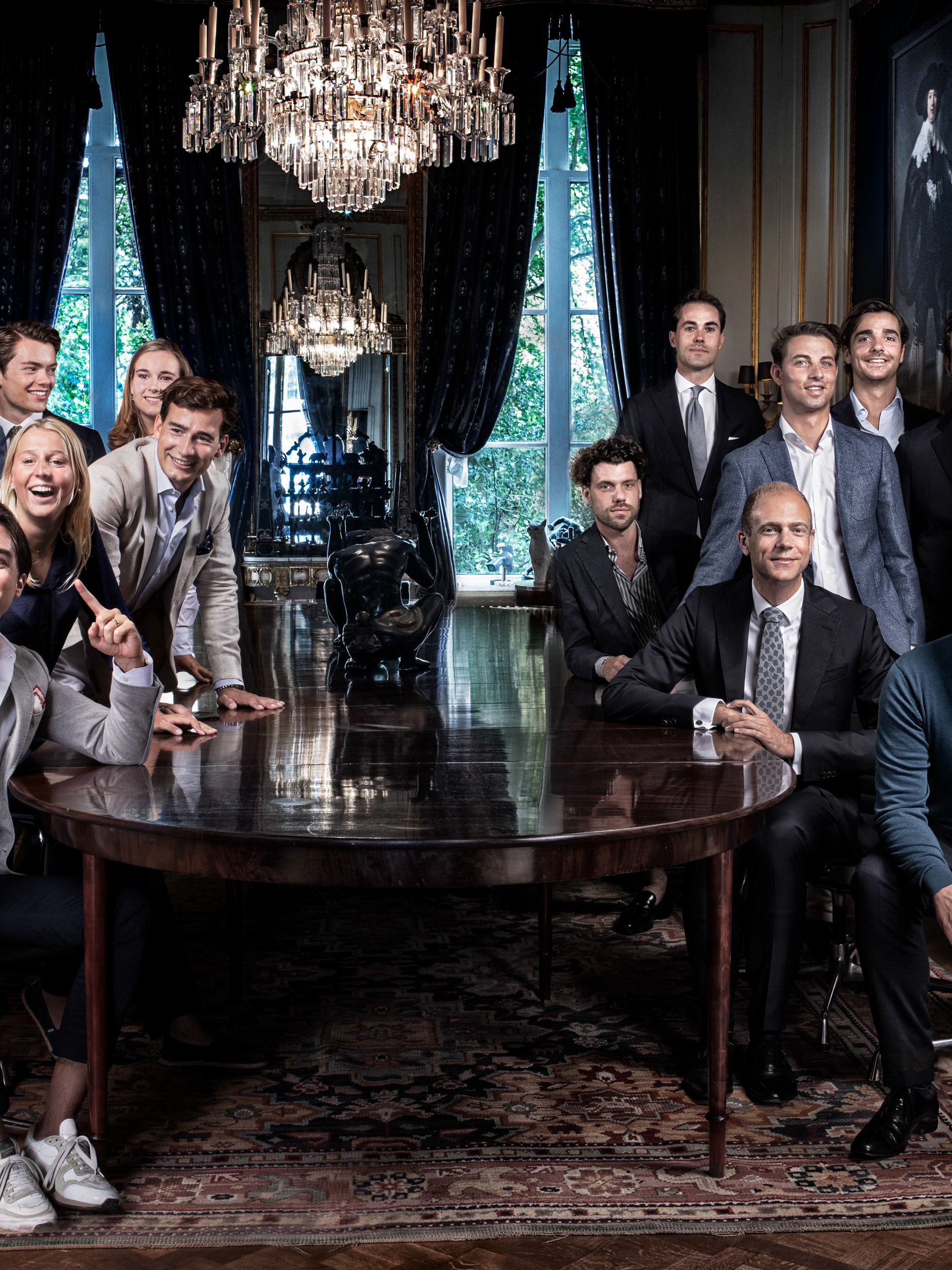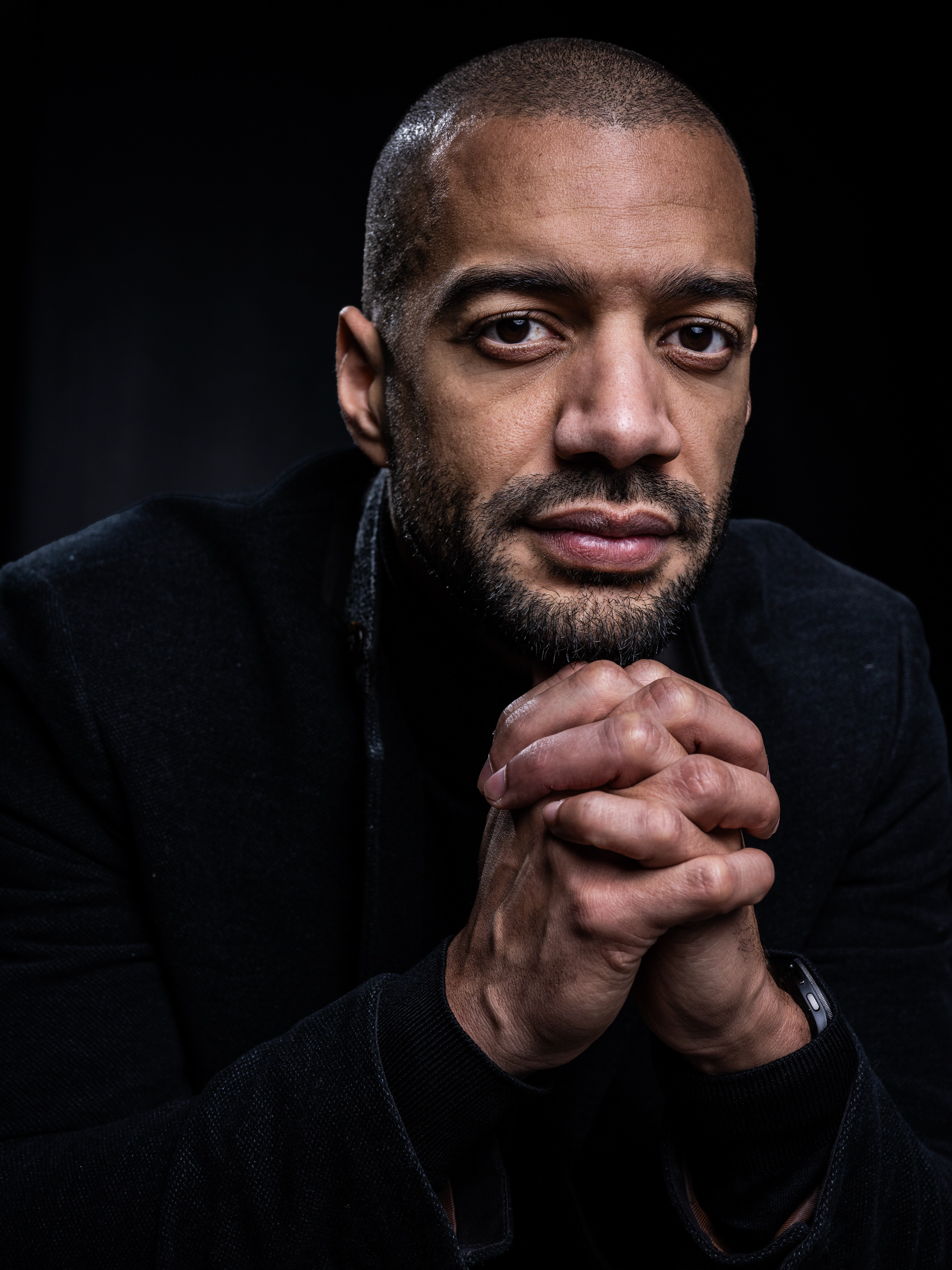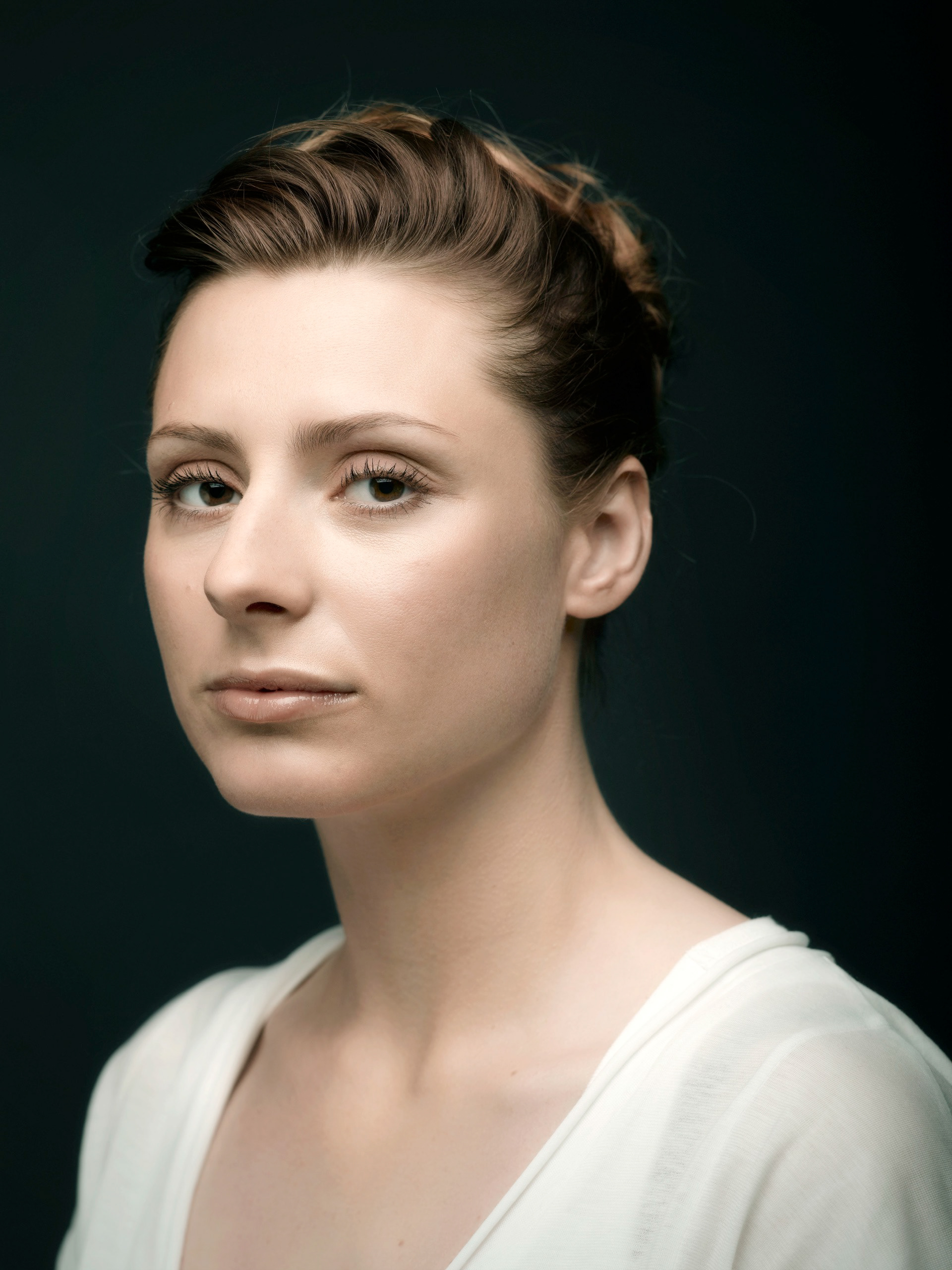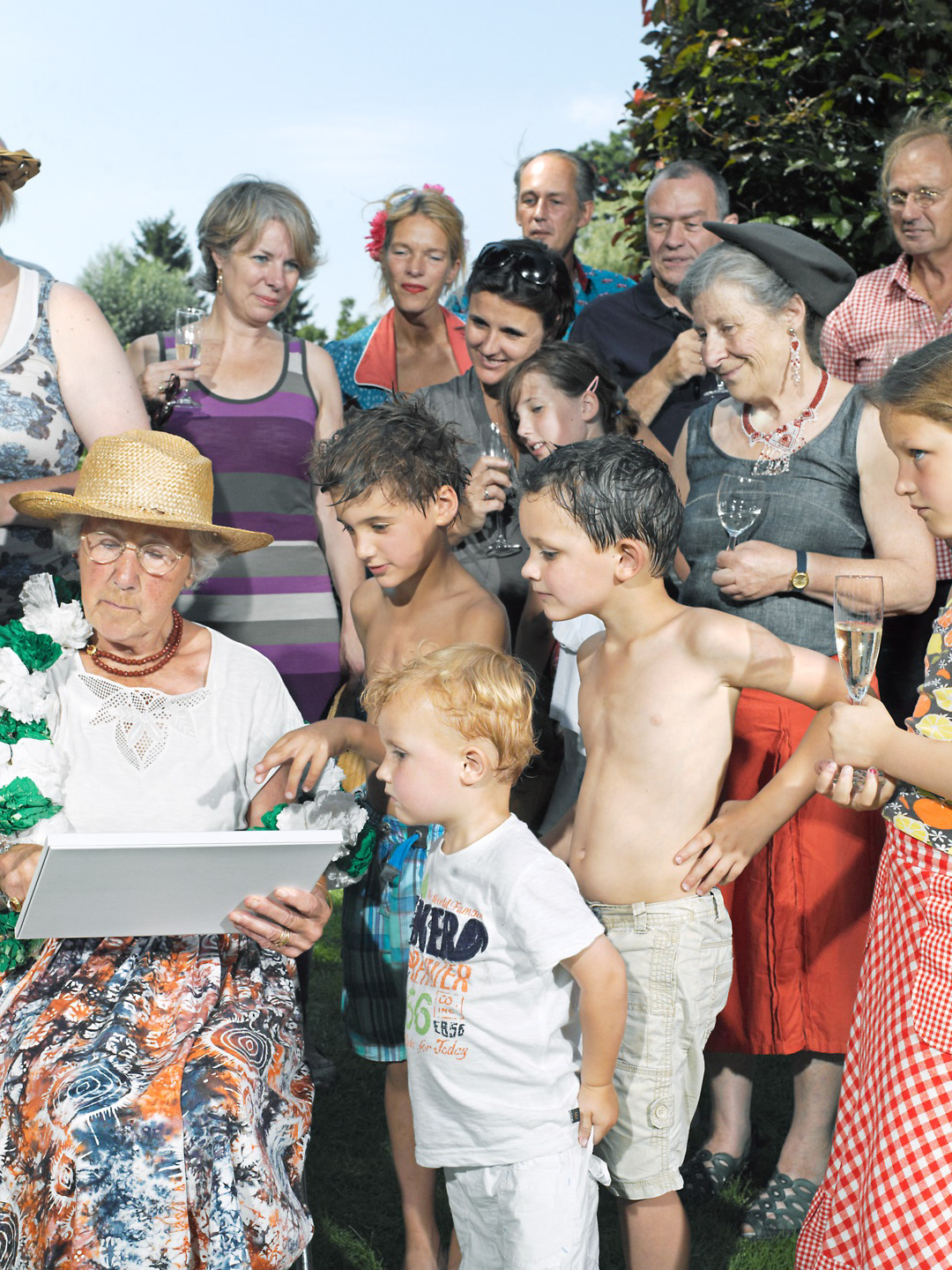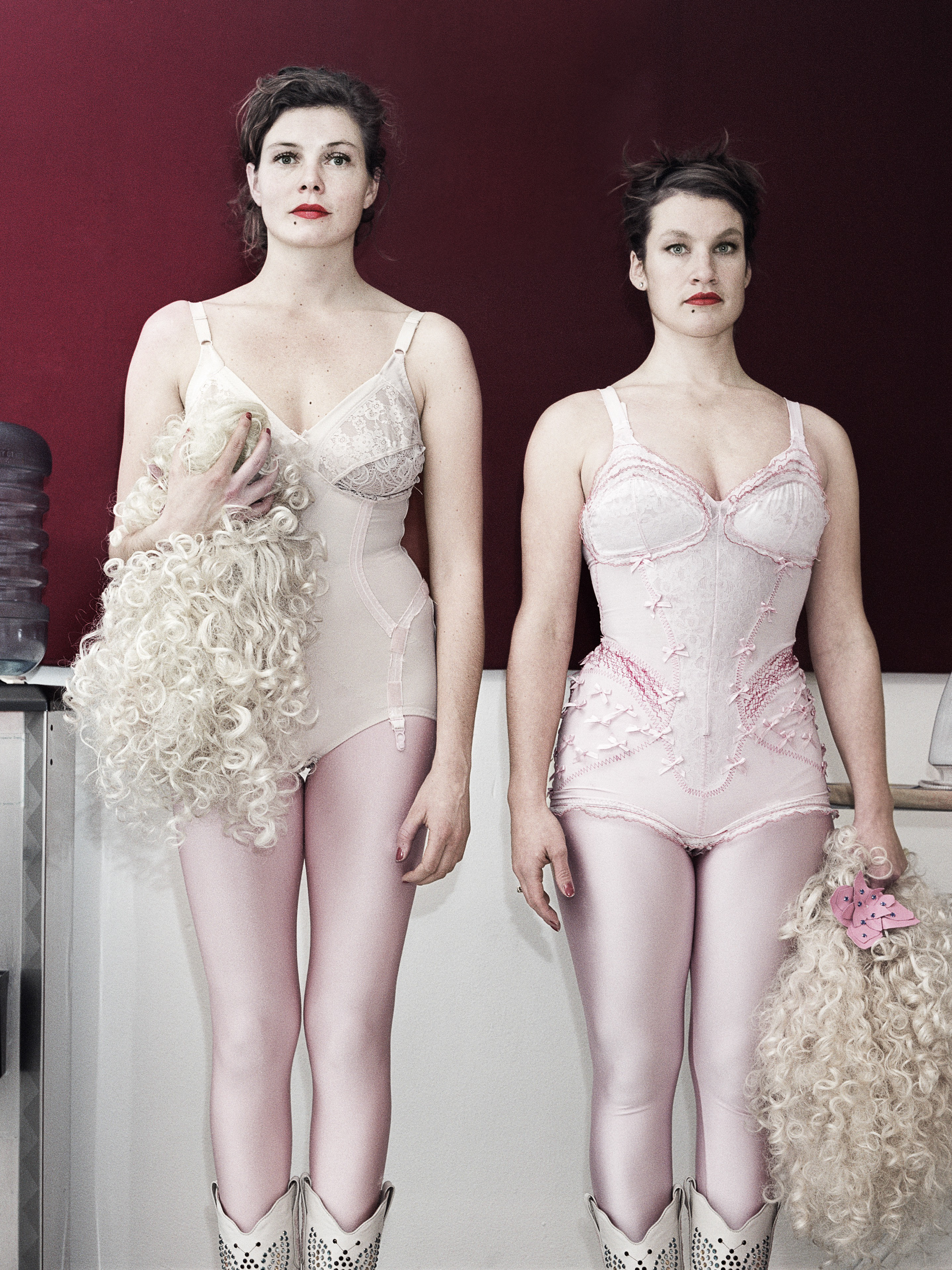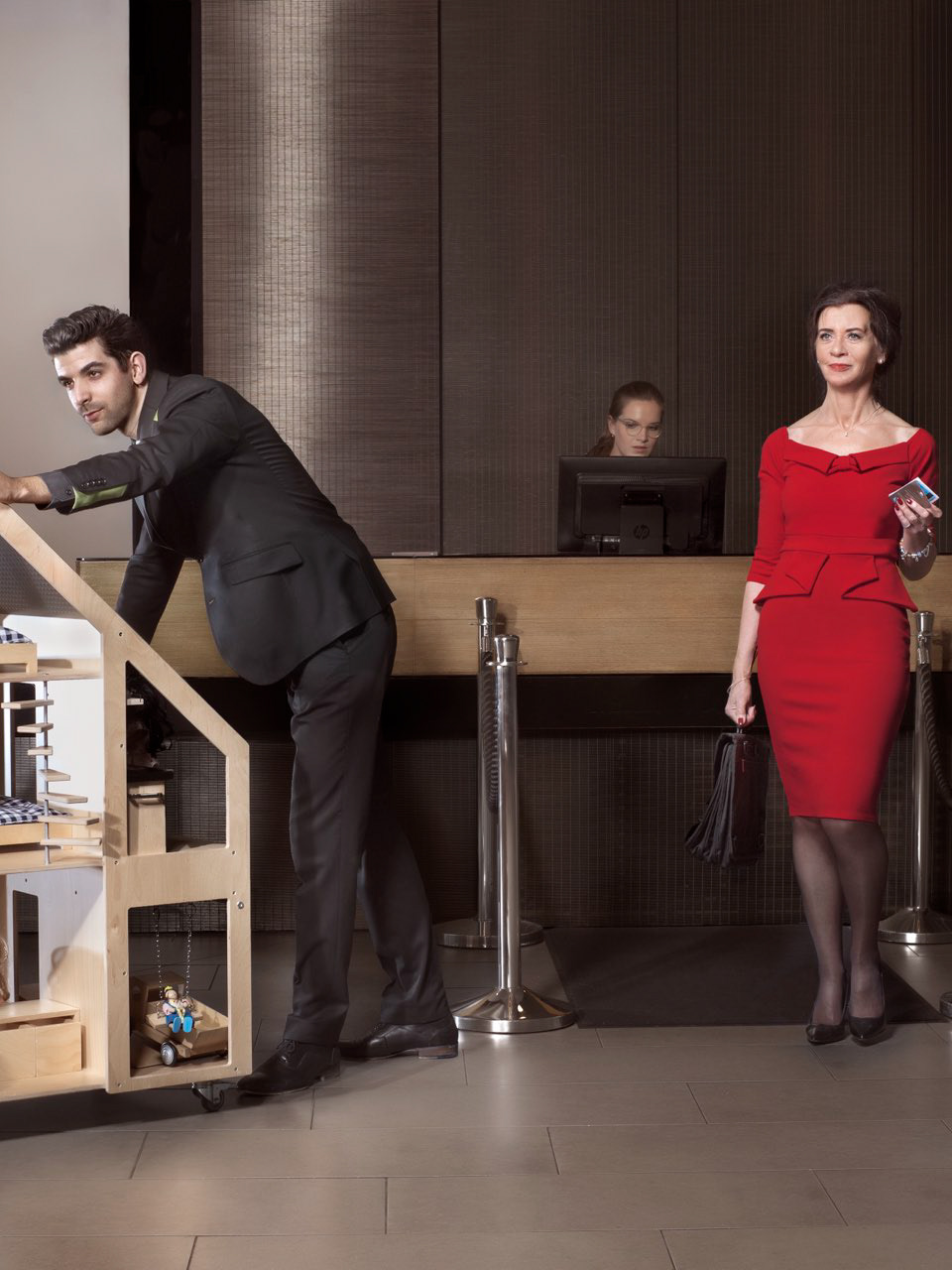
Slotboom sisters

Renee van Bavel, a Dutch artist and singer-songwriter based in Berlin, is known for her powerful reflections on themes like peace, freedom, democracy, and humanity. She transforms these profound topics into accessible artworks, songs, and commemorative projects. Notable works include The Mirror of Peace, a monumental mirror bearing the phrase, "This is what people who live in peace look like," and the song Echo, which delves into the lingering effects of war on future generations. Her work can be seen and heard across the Netherlands, Germany, and beyond, blending artistic depth with a strong sense of social engagement.

Black and white portrait of Daphne de Bruin, seated at an outdoor table, applying makeup. She holds a small, reflective compact mirror in one hand while delicately adjusting her eyeliner with the other, her eyes meeting the camera with a calm, self-assured gaze. The soft, dappled light filters through the background leaves, creating a sense of quiet anticipation and intimacy, capturing a private, reflective moment amidst the chaos of a busy day.

Lisa Westerhof is a Dutch sailor and pilot, born on November 2, 1981, in De Bilt, Netherlands. She achieved significant success in sailing, including a bronze medal in the Women's 470 class at the 2012 London Olympics alongside Lobke Berkhout. Westerhof also clinched world titles in the 470 class in 2009 and 2010. Beyond her sailing career, she pursued economics at Erasmus University and trained as a commercial pilot at the KLM Flight Academy. Currently, she serves as a First Officer on the Boeing 737 for KLM

Human connection through portraits – Portrait photography with narrative tension, capturing the cinematic world of Ilya van Marle. Elderly man immersed in a game of bridge, his thoughtful expression framed by warm lighting and stained glass, evoking moments of quiet reflection.

Gerardjan Rijnders (born June 2, 1949, in Delft) is a Dutch theater director, actor, and playwright known for his innovative and often provocative approach to the stage. His work captures the complexity of human nature, blending sharp observation with a touch of absurdism and a deep, lived-in sense of melancholy. This portrait reflects that essence perfectly – a moment caught in the quiet turbulence of thought. With his hand resting against his face, eyes slightly averted, Rijnders seems to hover in the space between reflection and critical self-examination. The stark, textured concrete background, stripped of distraction, amplifies this sense of raw introspection, while the choice for black and white reinforces the timeless, uncompromising nature of his craft.

This portrait of Johan Simons captures a moment of quiet intensity, balancing on the edge between contemplation and surrender. The choice to place him lying on an intricately patterned rug, framed by the deep shadows of a leather Chesterfield sofa, creates a striking visual tension. The overhead industrial lamp casts a sharp, dramatic light, isolating his face in a pool of brightness, while the rest of the scene dissolves into shadow. The composition evokes the atmosphere of a theater stage – a place where narratives unfold and characters wrestle with their inner conflicts. Simons' slightly tilted head, the disheveled hair, and the relaxed yet controlled position of his hands hint at a mind steeped in creative thought, perhaps in the midst of untangling a particularly complex piece of text or direction.

This portrait stands out for its clean, minimalist approach, emphasizing the raw texture and subtle emotion of the subject's expression.








